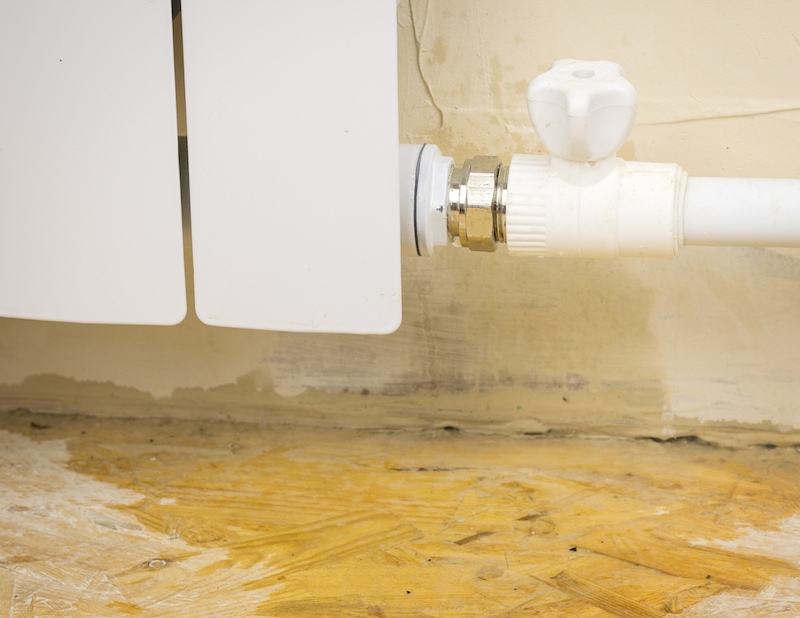Revealing the Key Triggers Behind House Water Leak Issues
Revealing the Key Triggers Behind House Water Leak Issues
Blog Article
Almost everyone seems to have their own unique assumption in relation to Most Common Causes of Leaky Pipes.

Leaks not just create waste of water yet can also trigger unnecessary damages to your residence and advertise undesirable natural growth. Water leakages may go unnoticed since most of the pipework in our residence is concealed. By comprehending as well as looking for day-to-day scenarios that trigger leaks, you can safeguard your home from future leakages and also unneeded damage. Today, we will look at 6 leak causes that might be creating your pipes to drip.
Immediate temperature changes.
Extreme temperature level adjustments in our pipelines can create them to increase as well as contract unexpectedly. This growth as well as tightening might cause splits in the pipes, especially if the temperature level are below freezing. It would be best if you watched on exactly how your plumbing works. The visibility of the previously mentioned circumstances often suggests a high threat.
Rusty water systems
This might be the reason of discoloration or warping on your water pipes. If our plumbing system is old, think about changing the pipelines given that they are at a greater risk of corrosion than the newer models.
Faulty Pipeline Joints
The factor at which your pipelines attach is regularly the weakest link in the waterline. Pipe joints can weaken over time, resulting in water leaks. Sadly, the majority of pipe joints are not quickly visible. If you have noisy pipes that make ticking or banging noises, particularly when the warm water is switched on, your pipeline joints are most likely under a lot of pressure. It is advisable to have your plumber check your system yearly.
Trespassing origins
The majority of water leakages begin outside your home instead of inside it. If you discover a sudden decrease in water stress, state in your tap, take time to go out and also analyze your lawn. You might see damp patches or sinkholes in your backyard, which may imply that tree roots are attacking water lines creating water to leak out. You can have your plumber check for intrusion, specifically if you have trees or bushes near your property.
Poor Water Connectors
At times, a leakage can be caused by loose hoses and pipelines that provide your home appliances. In case of a water links leak, you might discover water running straight from the supply line or puddles around your devices.
Clogged Drains
Blocked drains pipes may be irritating and also inconveniencing, but they can often end up triggering an overflow bring about burst pipelines. Maintain removing any type of materials that might go down your drains that might obstruct them to avoid such troubles.
All the above are sources of leakages however not all water leakages arise from plumbing leaks; some leaks may originate from roof leaks. All leaks must be fixed promptly to prevent water damages.
Leakages not just cause waste of water but can likewise trigger unneeded damages to your home and promote unwanted organic growth. By looking and also recognizing for day-to-day scenarios that cause leaks, you can secure your house from future leakages and also unneeded damages. Today, we will certainly look at six leak creates that may be causing your pipelines to trickle.
At times, a leak can be triggered by loose hose pipes and also pipelines that provide your appliances. In instance of a water links leakage, you might observe water running straight from the supply line or pools around your home appliances.
How To Check For Water Leak In Your Home
How To Check for Leaks
The average household's leaks can account for nearly 10,000 gallons of water wasted every year and ten percent of homes have leaks that waste 90 gallons or more per day. Common types of leaks found in the home are worn toilet flappers, dripping faucets, and other leaking valves. These types of leaks are often easy to fix, requiring only a few tools and hardware that can pay for themselves in water savings. Fixing easily corrected household water leaks can save homeowners about 10 percent on their water bills.
To check for leaks in your home, you first need to determine whether you're wasting water and then identify the source of the leak. Here are some tips for finding leaks:
Take a look at your water usage during a colder month, such as January or February. If a family of four exceeds 12,000 gallons per month, there are serious leaks.
Check your water meter before and after a two-hour period when no water is being used. If the meter changes at all, you probably have a leak.
Identify toilet leaks by placing a drop of food coloring in the toilet tank. If any color shows up in the bowl after 10 minutes, you have a leak. (Be sure to flush immediately after the experiment to avoid staining the tank.)
Examine faucet gaskets and pipe fittings for any water on the outside of the pipe to check for surface leaks.
Undetected water leaks can happen without the home or business owner even realizing. If you suspect a water leak, but not able to find the source. It is time to contact a professional water leak detection service, The Leak Doctor.
How To Find a Water Leak In Your Home
https://www.leakdoctor.com/blog/How-To-Check-For-Water-Leak-In-Your-Home_AE197.html

I came across that blog post about How to detect water leaks in your home when doing a lookup on the search engines. Sharing is caring. Helping people is fun. I cherish reading our article about Most Common Causes of Leaky Pipes.
Get Quote Now Report this page